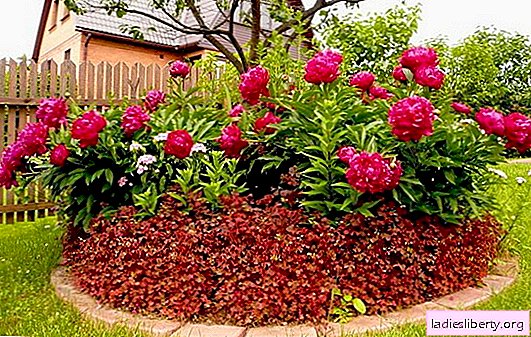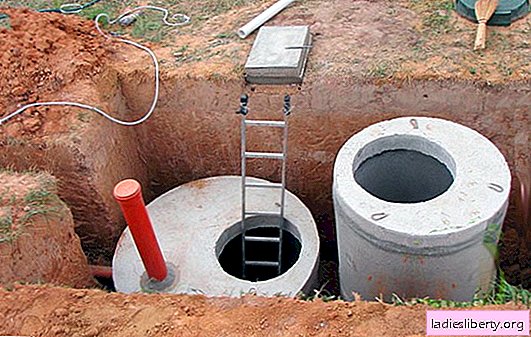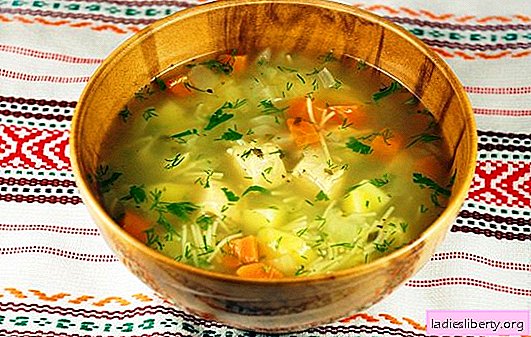
Peonies are very unpretentious and are characterized by relatively long flowering, thanks to which they won the love of growers.
Taxonomy has 32 species this plant.
According to the structure of the flower, peonies are divided into terry, semi-double, non-terry, anemic and Japanese.
The flowering period may be early, late or medium.
The plant flourishes without replanting for more than ten years, however, for this to begin with, it is necessary to choose the right place for it, the source material, and also follow certain guidelines for care.
Reproduction by division
This method is the most popular among florist. To achieve a good adaptation of the plant in a new place, it is important to observe the necessary conditions for preparing the site and the planting technology itself. It should be noted that planting material obtained from 3–4-year-old bushes is taking root best. Abundant flowering in the first and even second year of planting should not be expected, but every year the peonies will lead more and more intensively. If growing peonies is done to decorate a flower bed, they are often not transplanted.
How to select planting material
The most suitable time for landing - mid August. Before the arrival of frosts, the plant will have time to take root enough. Planting can also be done in the spring, however, it should be taken into account that the roots of pions begin to grow early, so the process should be carried out as early as possible and in a short time.
Delenki should not take too large, but not less than 7 cm in diameter. They must have 3 - 5 buds and intact roots. Planting material is inspected, rotted or dried parts of the plant are removed, if necessary, disinfection with a solution of potassium permanganate or copper sulfate is performed. The cut surface is powdered with crushed coal. It is important that the roots are not dried before planting, so they are powdered in a trench or covered with a wet sacking.

Planting material
How to choose and prepare a landing site
When choosing a place for growing peonies, it is necessary to take into account that they love the sun and are afraid of drafts. Although a small air circulation will prevent the breeding of pests. You can not plant plants near the walls or the fence, because with the scorching sun, heat will emanate from their surface, which will adversely affect the condition of the bushes. A prerequisite for abundant flowering is the lack of nearby trees that will cast a shadow.
There should not be close groundwater at the landing site, but if this cannot be avoided, a drainage should be made, which is made of gravel or broken bricks. Peonies grow well in beds and groups elevated above the ground. The distance between the bushes - at least one meter. And in order for the flowerbed to have an aesthetic appearance in early spring, I plant crocuses, muscari or other early flowering plants between them. Place for landing is prepared in advance, about a month. Peonies prefer loamy, well-dug soil, grow very poorly on peat.
For one bush, a hole is dug out with a depth and diameter of about 60 cm. It is filled with two thirds of humus or compost, sand, peat and ordinary ground from a vegetable garden in equal proportions. It should be approximately a bucket of each component. Iron sulfate (1 tbsp.), Potash (1 tsp.), Wood ash (1 l.), And double superphosphate (250 g.) Or bone meal (500 g.) Are added to this mixture. This feeding is necessary for intensive growth of roots that need nutrients. The rest of the space when planted will be filled with garden soil. The acidity of the soil in the end should be in the range of 6.0 - 6.5. In case the earth is prepared directly before planting, then for its tamping, watering and compaction is done manually.
Landing technology
Depth of landing is one of the most important factors in the normal rooting of pions. So, at a great depth - peonies do not bloom soon, and at shallow depths - delenki can dry out or freeze. Therefore, on loamy soils, they are planted 4–5 cm below the ground level, and on loamy soils — 6–7 cm. After embedding the bush, they water it with 5–8 lira water and also mulch with humus or peat. In dry weather, watering should be repeated several times with an interval of 5 days.
In the year of planting the bushes for the winter must be covered. For this purpose, use leaves, needles or humus. A prerequisite for the use of straw is the use of poisoned baits for mice. With proper planting and further cultivation of pions by the age of 5, the root system will reach up to 80 cm in diameter and will grow to 60 cm in depth even without additional feeding during the first few years.
Growing pions seed method
This method of growing peonies is rarely used among amateur flower growers. There are several reasons for this, firstly, because it is likely that the signs of the variety will split, secondly, flowering occurs only in the fifth or sixth year after planting, thirdly, it is a laborious process that requires certain knowledge. Seed propagation is of great importance in the selection of new varieties.
Sprouting your own seeds
The features of pion seeds are in their low enzymatic activity, due to which they germinate only in the second year after sowing. This requires stratification in two stages. It is possible to accelerate the production of sprouts using the seeds of our own collection. It should be borne in mind that not fully ripe seeds are harvested. The collection period lasts about a month and begins in mid-August. Seeding must be done immediately. The depth of occurrence in the ridges is about 5 cm. In this way, the seeds undergo a double stratification: warm at a temperature range from 16 to 28 ° C and cold (5 - 10 ° C). Seed germination can be expected next year.
Experienced specialists use some tricks to speed up the production of seedlings. At the stage of warm stratification, the seeds are subjected to daily temperature differences: at night - 15 ° C, and in the daytime - about 30 ° C. At this stage, there is a spine. Acceleration of the cold stratification is carried out by specific feeding of the material. For this, the hypocotyl, part of the stem under the cotyledons, is treated with a 0.01% gibberellic acid solution. This compound acts as a growth regulator. The process consists in wetting the bandage with a solution and applying it to the slightly opened hypocotyl.
A prerequisite is to maintain a sufficient level of humidity, for which the seedling is covered with a glass or a cap of translucent material, and the temperature regime is 5 - 10 ° C. If after 7 to 10 days the growth bud does not appear, the whole process is repeated anew. Then the seedlings are recovered in a warm room, where the temperature is maintained at 16 - 18 ° C.
Getting seedlings from purchased seeds
Such seeds, due to their long shelf life, may have a hardened shell. To facilitate their squealing, it is recommended to soak for two days in water at room temperature. If the seeds are sown at the end of the summer, they can be immediately sent to the ground.
Fundamentally seed germination is similar to the above method. Seeds are placed in bowls with moist soil. At the cold stage of stratification, the night temperature is maintained at 15 ° С and during the daytime - 30 ° С. Periodic watering is carried out by moistening from a spray bottle. To control the temperature when growing pions from seeds at home, it is recommended to use a heating pad with a thermostat.

Germinated seeds of peonies
The second “cold” stage of stratification begins after the appearance of the roots. Seeds are transplanted into fertile soil and transferred to a room with a lower temperature (5 - 10 ° C). And already after the appearance of the first leaflets, they are again placed in heat (18–20 ° С). If desired, procedures can be carried out with gibberellic acid. On a flower bed, where the peonies will be constantly, seedlings are planted by the end of August.
What is the regular care for peonies
Care of the bushes in the cultivation of peonies is weeding, loosening, feeding, watering and destroying pests. Loosening the soil is recommended after rain or watering. After 4 to 5 years after planting, depending on the state of the plants, the pions should be fed every 1 to 2 years. To nourish the plants, each shrub is fertilized with humus (about one bucket), superphosphate, and potassium chloride (50 grams each). Instead of humus, you can use mullein diluted 20 times.
A prerequisite for lush flowering is the consumption of moisture in dry weather. It is especially important to prevent the soil from drying out when budding, bud development and flowering. Watering is carried out at the rate of not less than 10 liters of water per bush. In the first half of September, watering is stopped.
Growing peonies has its own nuances. So, to prevent lodging of the bushes in case of strong gusts of wind or heavy rain, special supports are installed. Most often flower growers use ordinary wire for this purpose. Cut flowers carried out in such a way that leaves remain on the stem for the further formation of the bush. When growing peonies of terry varieties, the side buds are removed to increase the size of the flowers.
Pests and diseases of pions
How to deal with pests
When growing peonies, flower growers rarely encounter pests or diseases of the bushes. Among the first most often found lover of fragrant flowers of light shades of bronze beetle, living in the remains of plants or manure. It feeds on stamens, pistils and petals. An effective remedy for the control of the beetle is the infusion of Cheremitsa; various insecticides can also be used.

Bronze beetle
Gall nematodes lead to the destruction of the pion's root system, forming knotty swellings on it. In this case, of great importance is prevention, which consists in a thorough examination of planting material and regular harvesting of plant residues.
Red-yellow sod ant eats petals and sweet nectar of buds. To eliminate it, the plant and a small area near it are treated with special deterring agents. Shrubs planted in the shade or partial shade can be damaged by the caterpillars of the noctuid moth.
What to do in case of peony diseases
The most common disease of peonies is gray mold. It affects all parts of the plant and appears as a gray bloom. The stems first acquire a dark color, then bend and fall. Young shoots are more vulnerable to gray rot, especially if the spring is cold and damp. To combat the fungus is processed fungicides.
Signs of rust are yellow-brown spots on the leaves, the underside of which is covered with spores of the fungus. The risk of this disease increases if pines grow near the site. Spray peony bushes in early spring with a solution of Bordeaux liquids.
In the same way there is a fight against brown spot. This fungus prefers terrain with high humidity. The disease is characterized by the appearance of dark purple or brown spots on the leaves. First, they have an irregular shape and small size, and then cover the entire sheet plate. Brown spotting also affects the buds, which first darken and then crumble.
Mealy dew damages the leaves, causing them to turn yellow and die. To eliminate the fungus, peony bushes are sprayed with a solution in which 20 grams of copper sulphate and 200 to 250 grams of green soap are added to 10 liters of water.
When growing peonies, it should be remembered that proper care is the best preventive measure for diseases of this plant. Good planting material, regular inspections of the bushes, loosening the soil, fertilizing and watering, timely harvesting of plant residues are important conditions for healthy growth of pions.











